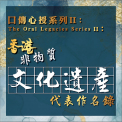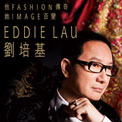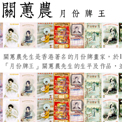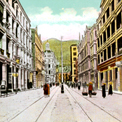-
History & Society
- Education in Pre-war Hong Kong
- History of Taikoo Sugar Refinery
- Hong Kong Products Exhibition
- Local Festivals Around the Year
- Post-war Industries
- Pre-war Industry
- The Hong Kong Jockey Club Archives
- Tin Hau Festival
- Memories We Share: Hong Kong in the 1960s and 1970s
- History in Miniature: The 150th Anniversary of Stamp Issuance in Hong Kong
- A Partnership with the People: KAAA and Post-war Agricultural Hong Kong
- The Oral Legacies (I) - Intangible Cultural Heritage of Hong Kong
- Hong Kong Currency
- Hong Kong, Benevolent City: Tung Wah and the Growth of Chinese Communities
- The Oral Legacies Series II: the Representative List of the Intangible Cultural Heritage of Hong Kong
- Braving the Storm: Hong Kong under Japanese Occupation
- A Century of Fashion: Hong Kong Cheongsam Story
Geography & EnvironmentArt & Culture- Calendar Posters of Kwan Wai-nung
- Festival of Hong Kong
- Ho Sau: Poetic Photography of Daily Life
- Hong Kong Cemetery
- Sketches by Kong Kai-ming
- The Culture of Bamboo Scaffolding
- The Legend of Silk and Wood: A Hong Kong Qin Story
- Journeys of Leung Ping Kwan
- From Soya Bean Milk To Pu'er Tea
- Applauding Hong Kong Pop Legend: Roman Tam
- 他 FASHION 傳奇 EDDIE LAU 她 IMAGE 百變 劉培基
- A Eulogy of Hong Kong Landscape in Painting: The Art of Huang Bore
- Imprint of the Heart: Artistic Journey of Huang Xinbo
- Porcelain and Painting
- A Voice for the Ages, a Master of his Art – A Tribute to Lam Kar Sing
- Memories of Renowned Lyricist: Richard Lam Chun Keung's Manuscripts
- Seal Carving in Lingnan
- Literary Giant - Jin Yong and Louis Cha
-
History & SocietyGeography & EnvironmentArt & Culture
-
View Oral History RecordsFeatured StoriesAbout Hong Kong Voices
-
Hong Kong MemoryA Century of Fashion: Hong Kong Cheongsam StoryRecently Visited
The Dawning of Hong Kong Cheongsam: The Late Qing Period to the 1920s
Hong Kong’s cheongsam tradition can be traced back to the transformation of women’s wear that took place in the late Qing period. Although imperial edicts had been issued in the early Qing dynasty forbidding Manchu women from imitating the loose-cut and wide-sleeved dresses traditionally worn by their Han counterparts, these orders were generally ignored after the mid-Qing period as the power of the court declined and a keen pursuit of extravagance took hold in society at large. By the late Qing, the dresses of Manchu and Han women alike had become increasingly ornate, while their silhouettes were also growing more slender as a result of Western influences.
After the 1911 Revolution, traditional female dresses were considered cumbersome and old-fashioned. A simpler form of blouse-and-skirt ensemble known as wenming xinzhuang, or ‘new civilised outfit’, came into vogue in Shanghai and Guangzhou. After the May Fourth Movement, it became fashionable for female students to wear men’s robes, which soon incorporated more ladylike features. By the late 1920s, these feminine dresses were often seen in major cities in the mainland, sported especially by film stars.
In those days, cheongsams were mainly worn by schoolteachers, students, ladies of wealthy families, actresses, singers and prostitutes in Hong Kong, while the blouse-and-trousers outfit remained the staple attire of most local women. The cheongsams of this period had an angular silhouette and were often adorned with trimmings and ‘flower buttons’.
Photos
Copyright © 2012 Hong Kong Memory. All rights reserved.













